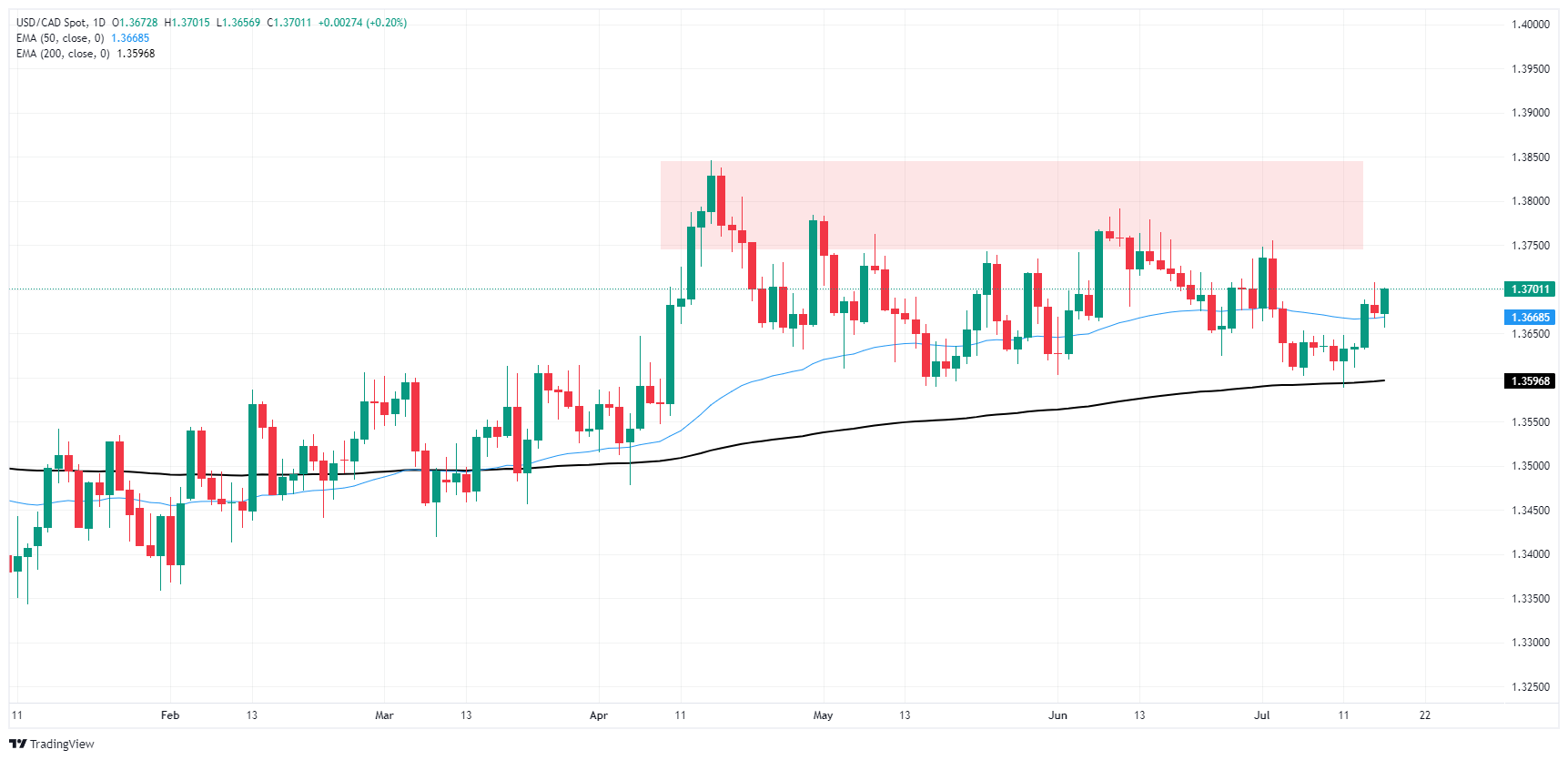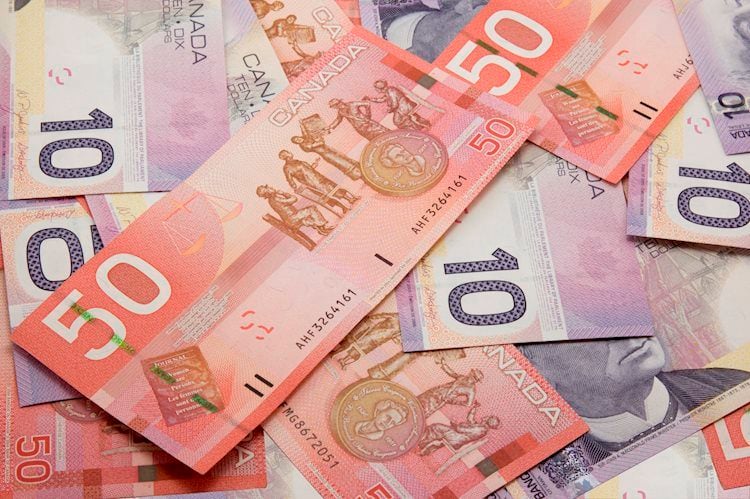- The Canadian Dollar backslid as investors take a closer look at inflation data.
- Canada gets a fresh rate call from the BoC next week.
- After a brief soft patch in Canadian inflation, BoC may have cut rates prematurely.
The Canadian Dollar (CAD) shed weight on Wednesday as investors take a second look at Canadian Consumer Price Index (CPI) inflation figures released earlier in the week. Despite an overall downtick in headline inflation figures thanks to easing pressures in overweighted inflation measures, core inflation gauges remained hotter. The Bank of Canada (BoC) will deliver its latest rate call next week.
Canada’s central bank is likely to cut interest rates next Wednesday as the BoC scrambles to alleviate price pressures on the Canadian housing investment market. Canada’s real estate sector accounts for roughly 9% of the country’s total economic output, nearly double the OECD average of 4.8%.
Daily digest market movers: Canadian Dollar stumbles as markets weigh the odds on inflation
- Key Canadian CPI inflation data this week cooled, but only in headline figures as core inflation metrics continue to tease a reignition.
- Headline CPI inflation ticked down to 2.7% YoY in June, down from the previous 2.9%, but trimmed mean Canadian CPI inflation is holding steady at 2.9% on an annualized basis. The BoC’s own core CPI inflation in June actually ticked higher to 1.9% YoY from 1.8%.
- The BoC raced to cut rates in June after a brief soft patch in inflation figures, and pre-committed to several more rate cuts to follow, making it difficult for the BoC to maintain a data-dependent policy stance.
- Shelter, food costs, telecommunications and internet charges, grocer fees, and rents are all climbing again now that industry leaders are no longer being put into the headlines for past price increases.
- As noted by Derek Holt of Scotiabank Economics, “The BoC is still likely to cut next week, but choosing to do so would put full faith in the BoC’s sketchy forecasting abilities while casting aside data dependency and fresher information on the evolving shock to global supply chains that may matter to a trade dependent country like Canada.”
Canadian Dollar PRICE Today
The table below shows the percentage change of Canadian Dollar (CAD) against listed major currencies today. Canadian Dollar was the strongest against the Australian Dollar.
| USD | EUR | GBP | JPY | CAD | AUD | NZD | CHF | |
|---|---|---|---|---|---|---|---|---|
| USD | -0.26% | -0.24% | -1.28% | 0.20% | 0.17% | -0.30% | -1.02% | |
| EUR | 0.26% | 0.04% | -1.02% | 0.46% | 0.42% | -0.07% | -0.76% | |
| GBP | 0.24% | -0.04% | -1.06% | 0.43% | 0.39% | -0.11% | -0.79% | |
| JPY | 1.28% | 1.02% | 1.06% | 1.50% | 1.49% | 0.98% | 0.30% | |
| CAD | -0.20% | -0.46% | -0.43% | -1.50% | -0.04% | -0.52% | -1.21% | |
| AUD | -0.17% | -0.42% | -0.39% | -1.49% | 0.04% | -0.48% | -1.18% | |
| NZD | 0.30% | 0.07% | 0.11% | -0.98% | 0.52% | 0.48% | -0.70% | |
| CHF | 1.02% | 0.76% | 0.79% | -0.30% | 1.21% | 1.18% | 0.70% |
The heat map shows percentage changes of major currencies against each other. The base currency is picked from the left column, while the quote currency is picked from the top row. For example, if you pick the Canadian Dollar from the left column and move along the horizontal line to the US Dollar, the percentage change displayed in the box will represent CAD (base)/USD (quote).
Technical analysis: Canadian Dollar backslides, gives USD/CAD a leg back into 1.3700
The Canadian Dollar (CAD) broadly lost ground on Wednesday, falling one-fifth of one percent against the US Dollar (USD), and shedding four-tenths of one percent against the Euro (EUR) and the Pound Sterling (GBP). Elsewhere, broad recoveries in the Japanese Yen (JPY) and Swiss Franc (CHF) means the CAD gives up ground to the day’s strong performers, falling -1.55% and 1.25%, respectively.
USD/CAD has been given a leg back up into the 1.3700 handle, bolstering the pair up from an intraday swing low into the 200-hour Exponential Moving Average (EMA) at 1.3656. Near-term momentum has tilted into the bullish side in favor of the Greenback against the Canadian Dollar as CAD bidders disappear into the ether.
USD/CAD hourly chart
USD/CAD daily chart
Canadian Dollar FAQs
The key factors driving the Canadian Dollar (CAD) are the level of interest rates set by the Bank of Canada (BoC), the price of Oil, Canada’s largest export, the health of its economy, inflation and the Trade Balance, which is the difference between the value of Canada’s exports versus its imports. Other factors include market sentiment – whether investors are taking on more risky assets (risk-on) or seeking safe-havens (risk-off) – with risk-on being CAD-positive. As its largest trading partner, the health of the US economy is also a key factor influencing the Canadian Dollar.
The Bank of Canada (BoC) has a significant influence on the Canadian Dollar by setting the level of interest rates that banks can lend to one another. This influences the level of interest rates for everyone. The main goal of the BoC is to maintain inflation at 1-3% by adjusting interest rates up or down. Relatively higher interest rates tend to be positive for the CAD. The Bank of Canada can also use quantitative easing and tightening to influence credit conditions, with the former CAD-negative and the latter CAD-positive.
The price of Oil is a key factor impacting the value of the Canadian Dollar. Petroleum is Canada’s biggest export, so Oil price tends to have an immediate impact on the CAD value. Generally, if Oil price rises CAD also goes up, as aggregate demand for the currency increases. The opposite is the case if the price of Oil falls. Higher Oil prices also tend to result in a greater likelihood of a positive Trade Balance, which is also supportive of the CAD.
While inflation had always traditionally been thought of as a negative factor for a currency since it lowers the value of money, the opposite has actually been the case in modern times with the relaxation of cross-border capital controls. Higher inflation tends to lead central banks to put up interest rates which attracts more capital inflows from global investors seeking a lucrative place to keep their money. This increases demand for the local currency, which in Canada’s case is the Canadian Dollar.
Macroeconomic data releases gauge the health of the economy and can have an impact on the Canadian Dollar. Indicators such as GDP, Manufacturing and Services PMIs, employment, and consumer sentiment surveys can all influence the direction of the CAD. A strong economy is good for the Canadian Dollar. Not only does it attract more foreign investment but it may encourage the Bank of Canada to put up interest rates, leading to a stronger currency. If economic data is weak, however, the CAD is likely to fall.












